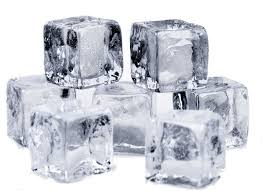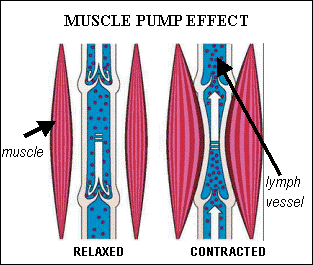
Sprain your ankle, tweak your back, sharp knee pain at the bottom of your squat? For many, the next step is to slap an ice pack or a bag of frozen peas on it. It’s even likely that your doctor recommends that you “RICE” (Rest, Ice, Compression, Elevation) the injury, which has been the go-to post-injury treatment for almost 40 years. But does ice really help the healing process? What if RICE is wrong? Nearly everyone who ices today believes they’re doing it to prevent inflammation, reduce swelling, and control pain. But here’s the problem – icing doesn’t prevent inflammation or swelling, it may even delay it.
Though icing has been considered a mainstream treatment by everyone from physicians to athletic trainers, a closer look reveals the practice to be more of a habit than based on scientific evidence. Even the physician who coined the term RICE (Dr. Gabe Mirkin in his 1978 sports medicine book) has officially retracted his stance on rest and ice. In fact, a 2012 review in the British Journal of Sports Medicine stated, “Ice is commonly used after acute muscle strains but there are no clinical studies of its effectiveness.”
We know far more now about the role of inflammatory cells and healing then we did in 1978, and we’re discovering that applying ice can not only delay healing, but may even increase the overall recovery time. Let’s take a closer look why.
How inflammation works
The human body is one of the most resilient machines in existence. Over thousands of years, we have become extremely efficient at healing following an injury and really good at recovering. When you damage a tissue through trauma or injury, your body produces inflammation, and for a good reason. Inflammation is the body’s natural response to protect itself from harm. It does this through your immunity, the same biological mechanisms that you use to kill germs. If you have an infection or disease, your immune system dispatches potent chemicals, cells, and repair proteins into the infected area to kill the germs. Similarly, when you suffer tissue damage or an injury, your immune system sends the same army of inflammatory cells and potent chemicals to sweep away cellular debris and deliver healing nutrients. Those chemicals and cells set off a cascade of reactions that we refer to as inflammation. More importantly, this is also what initiates the HEALING process.
What about swelling?
Swelling occurs as a waste byproduct of the inflammatory cascade that accumulates around the injury. Swelling is a sign that the repair processes are at work, but you want the body to naturally remove it as quickly as possible. Swelling reduces naturally via the lymphatic system, one-way vessels that remove waste products from our body. However, the lymphatic system is passive, meaning it relies on the natural contraction and compression of muscles to pump out fluid. When ice is applied to a body region for a prolonged period, nearby muscles suffer a decrease in their ability to contract and waste doesn’t get removed. Further, ice inhibits lymphatic pump opening. Applying ice to an inflamed area essentially hits the pause button on and may actually delay the healing process.

But ice makes it feel better
No doubt, ice can reduce pain and make you feel better. One thing ice has been shown to do effectively is reduce pain. Studies have shown that even people with chronic pain feel better after using ice or cold therapy. However, if the goal is to help the lymphatic system evacuate trapped waste from the damaged area or to help deliver fresh blood and nourishment to the region, ice should be used sparingly. Remember, ice only dulls the pain, so it also may create a false sense of security, which may tempt you to work out again before your body is ready.
Bottom Line
Ice is a cheap, effective, drugless method for taking the edge off the pain of fresh injuries. Safe application of ice to your skin can relieve symptoms from sprains, strains, bruises, and tendinitis. But the fact of the matter is, icing appears to have no effect on recovery at all, good or bad. What few studies we have on this just show – no difference.
My Recommendation – The Active Recovery Alternative
So what is the alternative to icing and resting? The answer is active recovery. The loading (mechanical stress on tissues caused by muscle activation and contraction) of tissues associated with active recovery has been shown to accelerate healing of bone, fibrous tissue, and skeletal muscle. Tissue loading will bring in nourishment and supplies, remove waste products, improve production and release of healing hormones, and remodel the injured tissue.
If you suffer an acute injury, stop exercising immediately. If the pain is severe – you are unable to move or bear any weight through it – you should seek out medical attention. If swelling is present, I recommend intermittent icing (no more than 10-12 minutes) off and on for the first 24-48 hours. After this initial phase, icing has not been shown to do any good. Since the lymphatic system relies on muscle activation to remove waste, light exercise and pain-free movement can jumpstart the healing process.
Recent research has shown that active recovery is effective for reducing inflammation and cellular stress post- exercise and post- injury. The simple act of getting your heart rate up will increase circulation and assist in flushing out swelling and inflammation. While icing may be helpful to decrease pain in the acute phase, increasing your amount of movement and exercise in a progressive, controlled, pain-free manner, is paramount to a fast recovery, and will assist in getting you back to your sport as fast as possible.
Hope you enjoyed the read!
-Dr. Andrew

